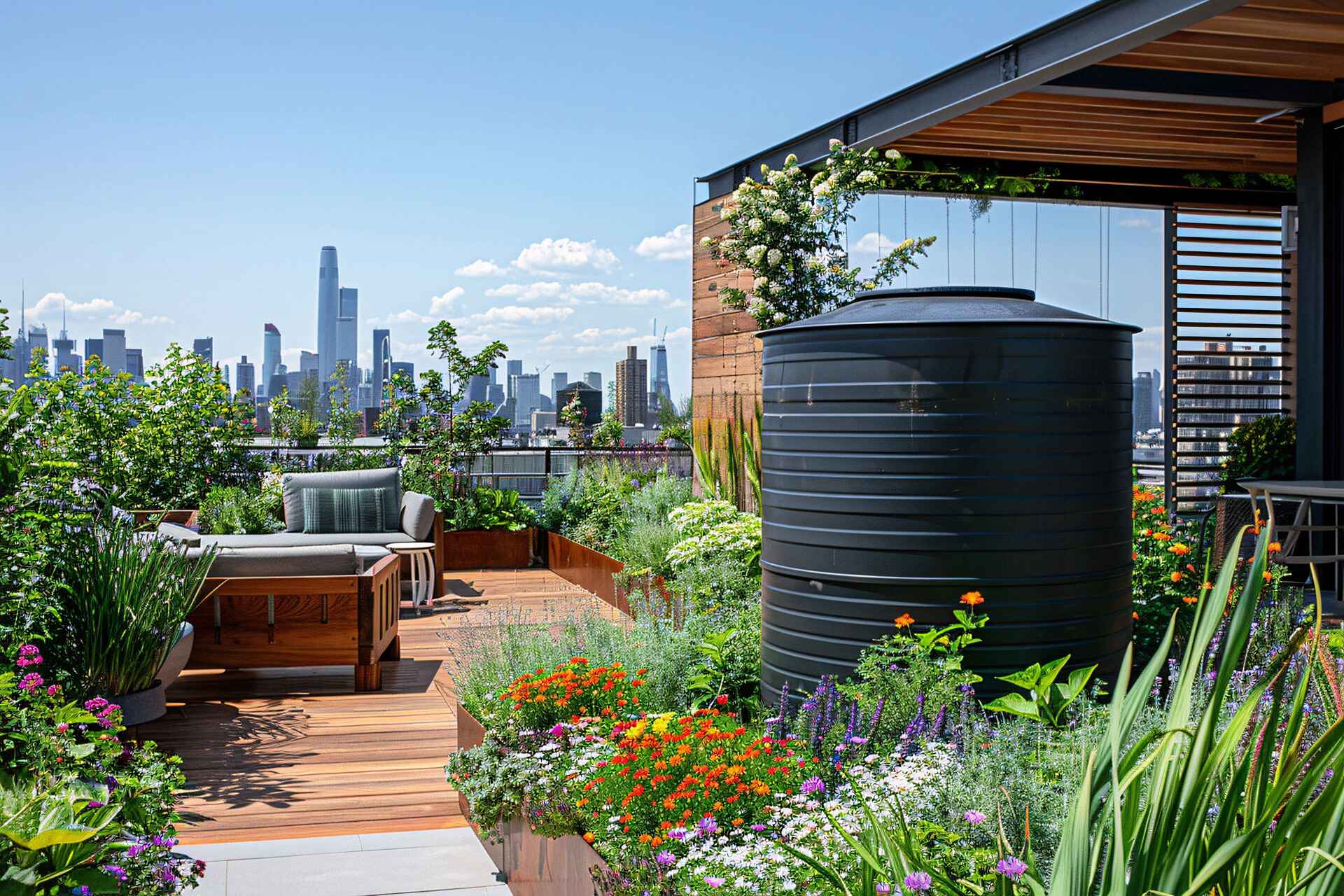Are There Any Challenges of Urban Agriculture?
Learn about the challenges of urban agriculture, including space limitations, costs, and potential environmental impacts.
.webp)
Urban agriculture faces several challenges, including limited space, high land costs, regulatory and zoning barriers, and potential soil and water contamination. Partnering with a company like Evergreen Infrastructure, which has expertise in solving these issues, can make a big difference. They ensure efficient space use, better crop yields, and sustainable practices for long-term success.
Cities around the world have been looking for ways to access fresh food. Food security has become a pressing issue, especially in densely populated areas.
What's more, traditional farming methods are known to pose environmental threats. These include soil degradation, water pollution, and greenhouse gas emissions.
Urban agriculture has become a popular solution to many of these problems.
It can help combat urban food insecurity, environmental concerns, and the need for local food production.
Urban agriculture has many benefits. However, it's important to recognise the challenges that come with it.
Our team has looked at numerous projects in our own cities and around the world, and we have compiled a summary of where the most notable challenges lie.
Some of them include limited space, resource access issues, and potential health risks.
Understanding these challenges is necessary to make urban farming a viable alternative to traditional farming.
If you want to know more about the challenges of urban agriculture, this article has all the answers.
The Challenges of Urban Agriculture
Urban farming has many advantages and positive effects on the environment. It's a sustainable alternative to traditional farming, and it brings fresh food closer to the city.
But, it also comes with some challenges worth discussing.
We at Evergreen Infrastructure feel that highlighting these challenges allows for better design solutions, improved planning, and successful outcomes - all of which our professional team is accustomed to solving.
Some of the challenges of urban agriculture include:
- Health and safety risks
- Limited space and high land costs
- Environmental impact concerns
- Resource limitations
- Technological and energy costs
- Regulatory and permitting barriers

Health and Safety Risks
The most notable challenges of urban farming are related to health and safety.
These challenges include:
- Soil contamination
- Water quality issues
- Air pollution
- Food safety concerns
- Improper use of pesticides and fertilisers
In urban areas, soil can be contaminated with heavy metals. For instance, lead, cadmium, or arsenic.
This can happen because of past industrial activities, traffic emissions, or illegal dumping.
These contaminants can be absorbed by plants. If the produce is consumed, it can pose risks to your health.
Water pollution is another common issue.

It may be polluted with industrial waste, sewage, or other contaminants. This problem can increase the risk of foodborne illnesses.
Most cities face high air pollution levels. Plants that grow close to roads or industrial areas can be exposed to airborne contaminants.
If proper food safety measures aren't in place, it can lead to different diseases.
Some urban farms may use unapproved fertilisers or pesticides.
This can lead to chemical residues on crops that pose health risks.
Regularly testing the growing media and water can prevent many of these issues.
To avoid air pollution, urban farms should be established far away from high-traffic areas and industrial zones.
Healthy food safety practices can limit many concerns. Urban farmers should be trained to handle food and tools properly.
When it comes to pesticides, it's important to use organic, non-toxic pest management practices.
Limited Space and High Land Costs
Cities have limited land available for farming. Finding suitable spaces for agriculture can be challenging.
Not to mention that urban farming often competes with other uses. For instance, housing, commercial development, or infrastructure.
This limits the scale of food production.
Another issue is the high costs of land. In many urban areas, land is expensive.
The cost of purchasing or renting land for farming can be prohibitive. This is especially true for small-scale farmers or community projects.
The lack of ownership adds another layer of complexity.
There are different ways to deal with the limited space issue. For instance, vertical farming, rooftop gardens, and small-scale container farming.
When it comes to high land costs, consider partnering with local governments and community organisations.
This may help secure access to unused land through subsidies, grants, or public-private partnerships. Using vacant lots or sharing land within community projects can also lower costs.
Environmental Impact Concerns
Urban farming is seen as a sustainable practice. It can help the environment in a number of ways.
However, urban agriculture can cause some environmental issues as well.
The negative impacts of urban farming related to the environment include:
- Polluted soil
- Water contamination
- Energy consumption
- Greenhouse gas emissions
- Poor waste management
- Air pollution
- Pesticide and herbicide use
Using contaminated soil for farming can harm plants and reduce crop yields. It can even lead to health risks.
Some urban farming methods are energy-intensive. For example, indoor farming, hydroponics, and vertical farming.
These methods rely on artificial lighting and climate control. The carbon footprint of these systems can be substantial.

Urban agriculture generally has a lower carbon footprint than conventional farming. But, high energy use can still contribute to greenhouse gas emissions.
There's also poor waste management to worry about. Waste can attract pests and produce foul odours. It can also release methane, a potent greenhouse gas.
Improper pesticide and herbicide use is another issue. Even organic-approved pesticides or natural herbicides can disrupt beneficial insect populations.
There are several ways to minimise the environmental impact of urban farming.
It's important to use sustainable farming practices. These can include organic pest control, composting, and water conservation techniques.
Avoid the use of harmful chemicals and practice responsible waste management. Doing this will help minimise the environmental footprint of urban farming.
Resource Limitations
One of the key challenge of urban agriculture is the limitation of resources.
Urban areas are often densely populated. There's usually little available land for farming.
The competition for space with housing and infrastructure means that suitable land for agriculture is scarce. Not only that, but it's expensive too.
Some cities face water shortages. Obtaining sufficient and affordable water for irrigation can be difficult.
Rural farms may have access to natural water sources. But, urban farms often rely on municipal water, which can be costly.
Good-quality soil is not always readily available in urban environments. Also, the accessible soil may be contaminated with pollutants.
Efficient practices can help make the most of available space, water, energy, and financial resources. Some of them include:
- Using space-efficient farming techniques
- Using water-saving and waste-management practices
- Transitioning to renewable energy sources
- Using alternative growing systems
- Seeking partnerships with local governments or community organisations
Technological and Energy Costs
Urban agriculture is expensive, especially in terms of technological and energy costs.
This includes the initial investment needed to start an urban farm.
These farms need extensive equipment. For instance, hydroponic systems, vertical farming setups, climate control systems, and LED grow lights.
It's also important to consider ongoing energy costs. Many systems are energy-intensive and need climate control.
Maintaining optimal temperatures can be costly, especially in areas with extreme weather.
Maintenance costs are another factor to think about.
Urban farming technology evolves rapidly. Equipment may need to be frequently upgraded or replaced to stay efficient and competitive.
These costs can add up, especially for small-scale farmers or projects with limited budgets.
Using renewable energy sources and energy-efficient technologies can help reduce costs.
This reduces dependence on fossil fuels. It can also help offset the high energy costs of lighting, climate control, and water circulation systems.
You can also use smart sensors and automation systems. Modern technology can be used to monitor plant health, water levels, and nutrient delivery in real time.
These technologies can reduce energy consumption by ensuring that resources like water and light are used only when necessary.
Regulatory and Permitting Barriers
If you want to invest in an urban farm, you have to obtain the right permits. You also have to make sure you're abiding by government regulations.
Here are some potential regulatory limitations of urban farming:
- Zoning and land use regulations
- Food safety regulations
- Building codes and structural regulations
- Environmental regulations
- Livestock and animal-keeping regulations
- Planning and development regulations
In Australia, urban agriculture is subject to a range of regulations. These regulations can make establishing and operating urban farms challenging.
Land use is largely determined by local councils through zoning regulations.
These laws designate land for specific purposes. This could be for residential, commercial, industrial, or agricultural use.
Urban agriculture projects may face zoning restrictions. These restrictions prohibit farming activities in certain residential or commercial zones.

This means you might not be able to establish an urban farm where you initially wanted to. The same applies to community gardens and rooftop gardens.
Even when urban farming is permitted in a certain area, local councils may ask for permits for some activities.
For example, setting up a greenhouse, using a rooftop for gardening, or selling produce directly to consumers.
The process of obtaining these permits can be complex and costly.
While there are no ways to go around these regulations, there are things you can do to streamline the permitting process.
You can advocate for policy reforms that support urban agriculture by working with local authorities. Creating urban agriculture zones or exemptions can make farming more accessible.
Combating the Challenges of Urban Agriculture
Urban agriculture offers promising solutions for sustainable food production and community development. But it also faces several challenges.
These challenges include limited space, high land costs, regulatory barriers, and more.
However, despite these challenges, the benefits of urban agriculture far outweigh the drawbacks.
With thoughtful planning, innovative practices, and supportive policies, these challenges can be managed, allowing urban farming to thrive.
If you're interested in urban farming, rest assured that our team has a reliable urban agriculture expert who is a professional in the field.
Evergreen Infrastructure specialises in green spaces in urban areas.
We help design and build green roofs, green walls, urban farms, and more. We custom-design urban farms, use efficient rainwater harvesting systems, and help you choose the right plants.
If you'd like to know more, please reach out to us.
{{cta}}
We create green oases in urban settings
We'd love to discuss how we can partner to bring innovative, sustainable solutions to your urban environment.
.webp)
.webp)



